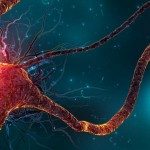Background
Making appropriate behavioral choices depending on the environment and one’s internal state is essential for survival. Yet, the neural basis of the decision-making process leading to appropriate behavioral choices and how these can be modulated by external and internal factors remains poorly understood at the neural circuit level. No matter how simple or complex the decision, the mapping between sensation and behavior must be flexible, so that multisensory context, state and experience can all modulate decisions. However, different factors could bias the system towards different behaviors simultaneously, but many actions are physically exclusive. Thus, mechanisms of actions must exist that promote one behavior and suppress other. Therefore, key questions in the study of behavioral choice are: how do sensory information and animal’s internal state bias behavioral choice and how are competitive interactions implemented that enable one behavior to be chosen based on even a small net bias? In addition, behaviors that are chosen are frequently not single actions but sequences of multiple actions, so mechanisms must also exist that regulate the transition from one behavior to the next. Despite the number of theoretical models and the variety of species and approaches used to investigate the neural basis of behavioral choice and sequences the circuit mechanisms by which behaviors are chosen and how sequences are generated remain poorly understood. This is mainly due to the difficulty in mapping circuits with synaptic resolution and in determining causal relationships between identified circuit elements and behavioral choice and sequence transitions. That is the reason our team uses Drosophila larva that is an excellent model organism for neuronal circuit mapping and analysis to address these questions. In addition to the numerical simplicity and tractability of its nervous system, the excellent genetic toolbox of Drosophila makes neuronal manipulations possible at the single neuron level. The advances in optical neurophysiology allow the analysis of physiological properties of neurons and their functional relationships. Finally, the larva has a key advantage: a volume of electron microscopy images spanning the entire nervous system has been generated and circuits can be mapped with synaptic resolution. We used these approaches to determine circuit motifs and mechanisms underlying the choice between two types of aversive behaviors and the mechanism of sequence transition (Jovanic et al., 2016).
Project
Our team will further expand this research to study circuit mechanisms of decisions in complex behavior paradigms to determine how sensory context and animals’ state modulate decisions and how longer behavioral sequences are generated by the nervous system. In a behavioral screen, we have identified candidate neurons for different actions in stimulus-evoked behavioral sequences(Jovanic et al., 2017). We will use these neurons as the starting point for these studies combining functional connectivity, EM reconstruction and behavioral genetics approaches (including optogenetics). The Master student will be involved in identifying the neural substrates of decisions and sequences and their modulation by the context by iteratively combining genetics, behavior and connectomics approaches in the Drosophila larva. Targeted neuronal manipulations (silencing/activating) using the Drosophila genetic toolbox during behavioral response will reveal the neuron’s role in the behavior. We will further identify its synaptic partners using electron microscopy reconstruction and then examine their role in behavior (by silencing/activating) them to identify neural circuit elements and motifs underlying decisions and sequences.
Jovanic, T., Schneider-Mizell, C.M., Shao, M., Masson, J.-B., Denisov, G., Fetter, R.D., Mensh, B.D., Truman, J.W., Cardona, A., and Zlatic, M. (2016). Competitive Disinhibition Mediates Behavioral Choice and Sequences in Drosophila. Cell 167, 858–870.e19.(http://dx.doi.org/10.1016/j.cell.2016.09.009)
Jovanic, T., Masson, J.-B., Truman, J.W., and Zlatic, M. (2017). Mapping neurons and brain regions underlying sensorimotor decisions and sequences in Drosophila. (BioRxiv 215236, 2017, https://doi.org/10.1101/215236)
Interested candidates should contact Tihana Jovanic: tihana.jovanic@pasteur.fr, tihana.jovanic@cnrs.fr

